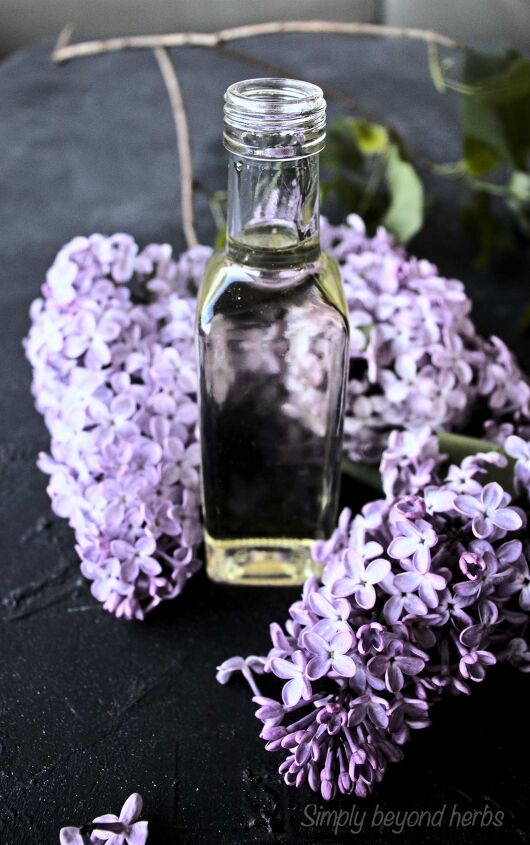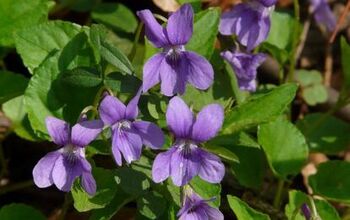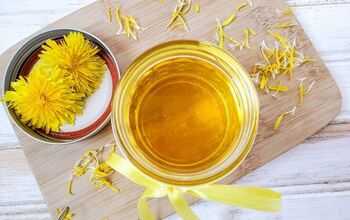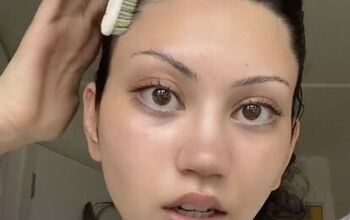How to Make Lilac Oil and Its Uses

Capture the beauty and medicinal benefit of scented lilac flowers in this powerful and fragrant lilac oil that can be later used in homemade cosmetics or added to the bath.
For me, lilac is a symbol of spring in full bloom, captivating scent and beauty, the end of all internal and external wars, and also a beloved medicinal herb.
The lush clusters of flowers are beautiful, however, their flowering time is short. One way to capture their fragrance and medicinal benefits for longer is to infuse their flowers in a carrier oil to make lilac oil. Lilacs have astringent properties that are helpful in skin tightening, thus reducing age lines or wrinkles. This oil can be used further in other skincare products such as creams, lotions or soaps.
Lilacs are also edible and I like to make this lilac syrup to extend their scent and taste for longer.
Capturing lilac scents and its benefits
Lilacs have a decadent fragrance that is often used in perfumes, candles or soaps and it’s prized the world over. Lilacs belong to the Oleaceae family that also comprises jasmin and their fragrance is floral with a touch of jasmine and honey
The infused lilac oil is very mildly fragrant so if you are making it just for its scent you might be disappointed.
Lilac essential oil
If you are after the lilac scent you might be thinking Lilac essential oil. However the real lilac essential does not exist! The truth is that lilac flowers don’t produce enough essential oil to undergo the process of steam distillation. There would be an enormous number of lilac petals needed to make a small fraction of essential oil which would be too costly.
So lilac essential oil is extracted by steam-distillation of the leaves, not flowers! Although it has all the medicinal benefits of lilac, except its scent. How come it’s fragrant? The manufacturers use synthetic fragrances that imitate the fragrance of lilacs
Lilac fragrance oil
So if you want the natural scent of lilac, try lilac fragrance oil which is made by enfleurage, the method that preserves scent. This method developed in France uses organic petals that are placed in palm oil from infusion. Each day for the period of one month the old blossoms are discarded and new petals are added to the infused oil. They also add organic spirits that encourage evaporation so at the end of the process the palm oil evaporates leaving the lilac fragrance oil behind. This oil is all natural with many medicinal benefits and uses in aromatherapy or cosmetic industry.
Lilac oil benefits and uses
While lilac infused oil is very moderate in terms of scent it possesses many medicinal benefits for your skin
Lilacs are naturally astringent that help tighten the skin, reducing wrinkles and pores. I love to use them in toners or anti wrinkle creams.
They are also anti-fungal and natural antibacterial thus ideal for acne. Add this oil into an acne mask, acne toner or this aloe vera cream to ease acne.
Lilac scent brings pleasant memories and works when one needs to calm down during stressful times. This oil made of lilac petals is great to add to your bath (just a few drops) for a relaxing feeling. It helps lift your mood and relieve anxiety and tension.
How to make lilac oil
First step - Start with foraging lilacs
The common lilac flowers (Syringa vulgaris) are fragrant and their color generally ranges in hue from pink to deep purple. The lilac flower typically blooms in spring and has a distinctive scent that is often used in perfumes, candles or soaps. There are not too many lilac shrubs that grow in the wild, most of them are growing in the gardens.
Collect the flowers in the morning on a sunny day. To make oil from lilacs you will need 2-3 flowers. Don’t wash them, just watch for insects and shake them off, remove any dirt, and the flowers are ready to be used.
Usually when making infused oils I recommend drying the flowers first to avoid the development of mold. Fresh flowers contain moisture that may cause the oil to become rancid. This case is an exception. To capture the scent I prefer to make the oil from fresh flowers as dried ones are not fragrant anymore. So I suggest making the oil in a small badge as the longevity might be affected.
Second step - Choose your carrier oil
Keeping in mind that we want to capture the unique scent of lilac I would not select a carrier oil that has a distinct odor as it may alter the aroma. So fractionated coconut oil or sunflower oil would be my choice. But feel free to select a carrier oil as per your skin type and absorbency rate.
Third step
use a sterilized glass jar that you fill with lilac petals. I used a pestle to make the pieces of petals as small as possible so they can relieve their fragrance. Close the jar
Fourth step - select an infusion method
Again considering the fact that we want to capture the scent of lilac in this oil, I would select the traditional slow infusion method that requires time and patience.
Place the jar in a cool and dark place where you can see it.
Fifth step
To boost the fragrance we will shake the jar every couple days while adding fresh petals into the infusion. Every time you open the jar and check for the scent. It really depends on the type of flowers you selected and the oil. It took me 3 weeks and 6 times adding new petals to have a decent scent. As I said at the beginning it is a very mild lilac fragrance that made me happy.
Sixth step - strain the oil
Use a fine mesh strainer to separate out your oil. I use a wooden spoon to press and release every drop of oil from the flowers. You can add vitamin E to the pure oil to extend its shelf life. You can use a glass bottle with a dropper top or any other glass jar to keep the oil safe.
Seventh step
Label it and store it in a fridge for several months.
What color does the final lilac infused oil have?Well the color depends on the color of the flowers. Since lilac flowers have a large variety of flowers it can vary from light purple or pink to dark shades. Rather than color I would try to select the most fragrant flowers to achieve the best lilac oil.
How to use lilac oil?Considering its antimicrobial and antifungal benefits the lilac oil would be best in skincare products that help with acne or fungus. It can also tone the skin so adding a few drops into your toner would be great. I like to add a few drops into my bath as its scent has relaxing properties and helps to relieve tension and calm your mind. Here are some ideas of uses
How long does homemade lilac oil last?Since we used fresh flowers to highlight its scent this lilac oil will last up to 2 months if kept refrigerated. It is better to use it within a couple of weeks in some skincare products rather than to keep it in the fridge.
Enjoyed the project?
Ingredients
- 3 lilac blossoms
- 200 ml (0.8 cup) sunflower oil
- vitamin E (optional)
Tools
- bottle dropper
Instructions
- Start with foraging lilacs -Collect the flowers in the morning on a sunny day. To make a lilac oil you will need 2-3 flowers. Don’t wash them, just watch for the insects and shake it off, remove any dirt flowers that are ready to be used.
- use a sterilized glass jar that you fill with lilac petals. I used a pestle to make the pieces of petals the smallest so they can relieve the fragrance.
- Close the jar
- Place the jar on in a cool and dark place where you can see it.
- To boost the fragrance shake the jar every couple of days by adding fresh petals into the infusion. Every time you open the jar and check for the scent.
- This repeat for 3 weeks with 6 times adding new petals to have a decent scent.
- Strain the oil
- Use a fine-mesh strainer to separate out your lilac oil.
- Add vitamin E to the pure oil to extend its shelf life.
- Label it and store it in a fridge for several months.
Notes
- You can use a glass bottle with a dropper top or any other glass jar to keep the oil safe.
The author may collect a small share of sales from the links on this page.





























Comments
Join the conversation
I have a lilac bush. I'm glad to know they are edible, as I have a mentally challenged grandson, and now I know this won't hurt him. I'm also glad to know that i can take a little of spring throughout the year. Blessings!
What is the Sun 🌞 flower oil for. It doesn’t say in your directions.
peggy